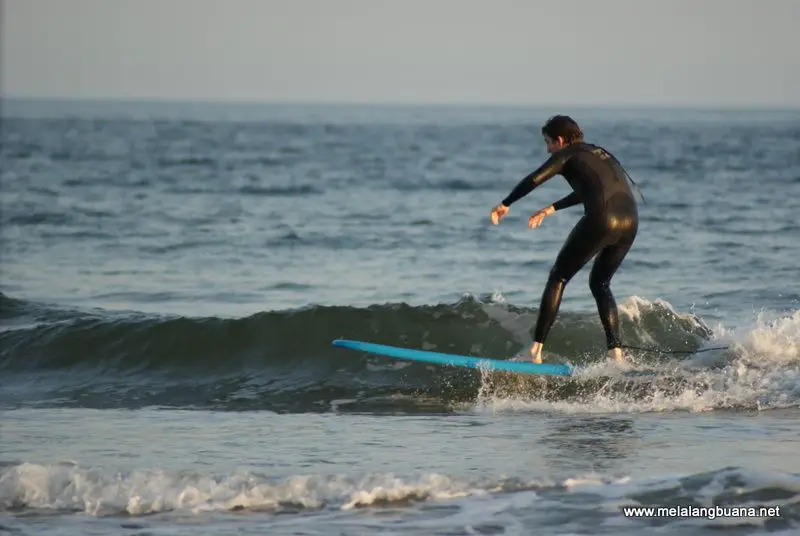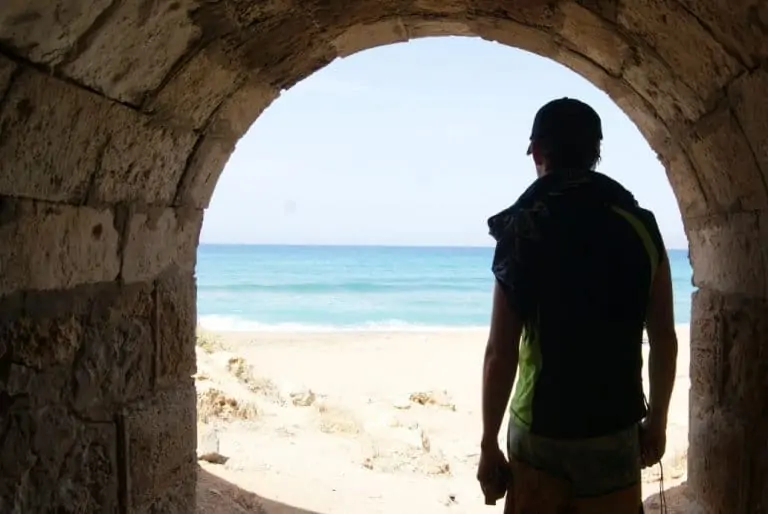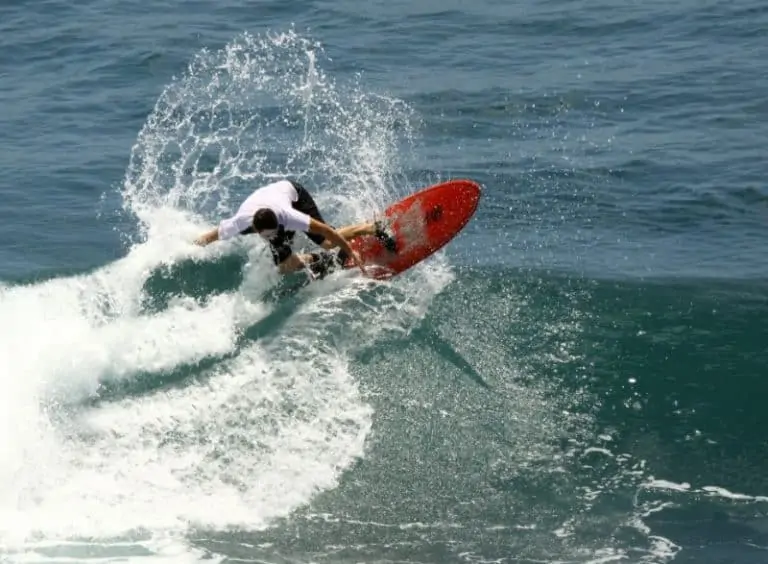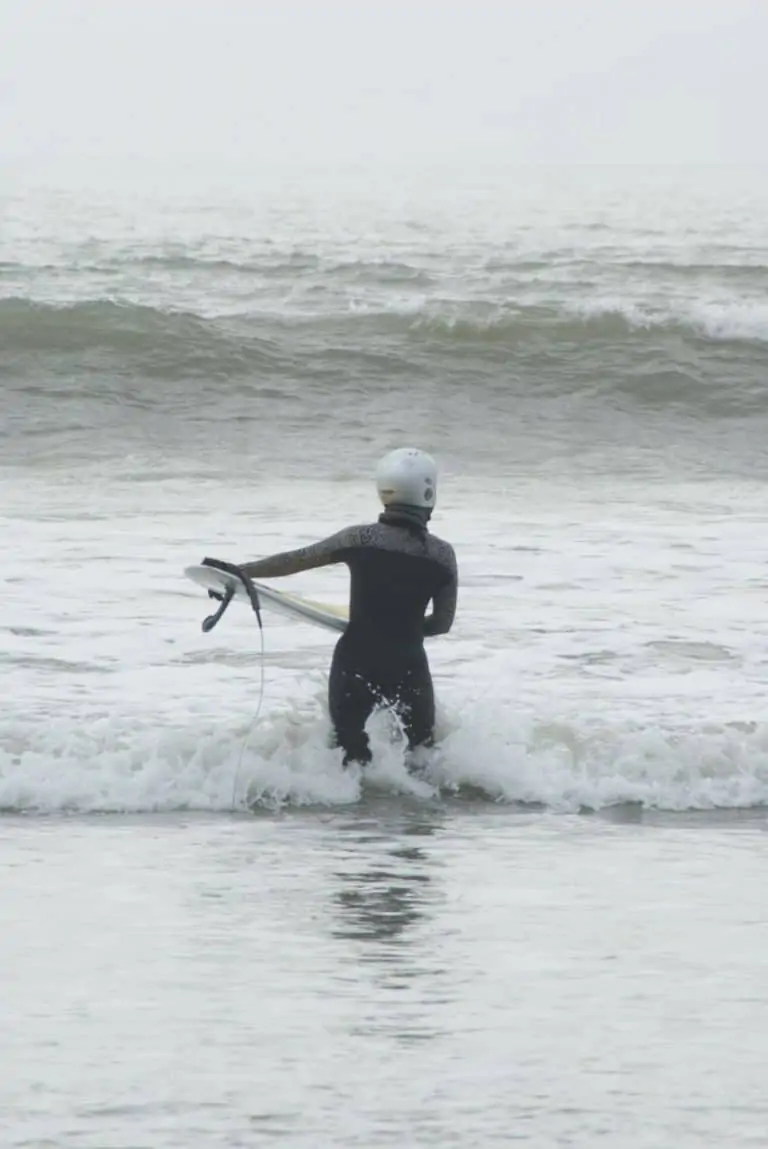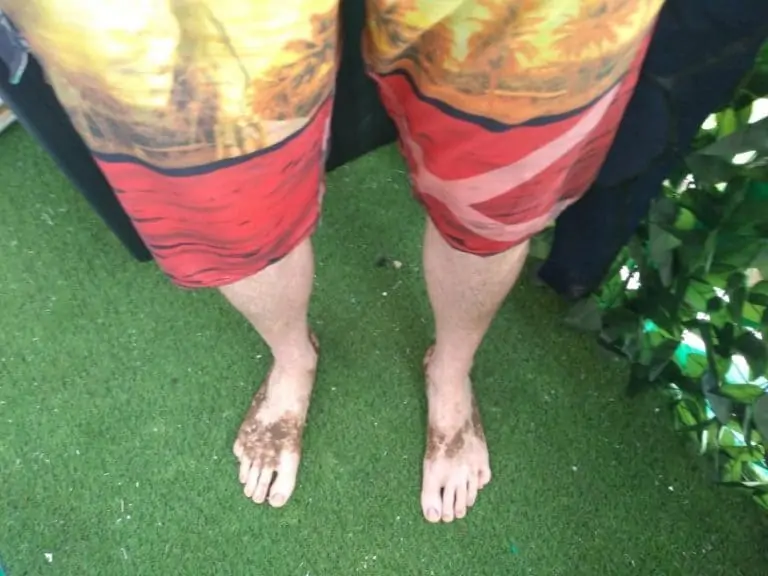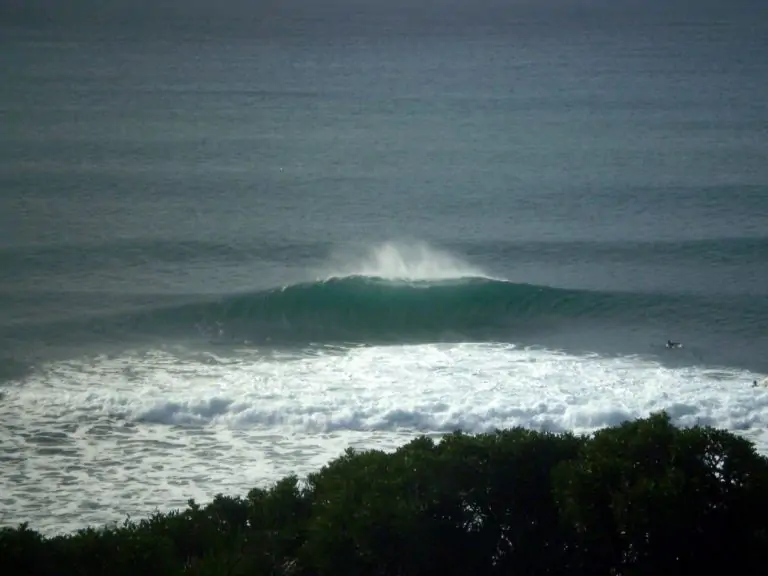Surfing in 60 Degree Water: Here’s What to Expect
Going surfing is great fun and conditions for it come in all shapes and sizes.
However, given the changing seasons and weather around the world, as well as travel to new spots, it can sometimes be hard to know what to expect in terms of sea temperature.
Although we can all see the local water temperature for any given destination online, it’s still not the same as surfing in water of that temperature for the first time.
As such, many people who are planning a surf in a new area have the following question:
[Q]What’s it like surfing 60 degree (°F) water? It’s a little bit fresh to start but absolutely fine once you have been in the surf for more than a few minutes. You will need a wetsuit if you want to stay in for a proper surf – the details of which will be explained below.
So, that’s the brief version, but let’s explain this in more detail below to make sure that you get everything right for your surf in 60°F water!

Feeling of Surfing 60°F (15°C) Water
Fresh Getting in
When you hit the surf in this temperature, you will definitely feel a fresh sensation as the water is not that warm.
This obviously depends on the air temperature as that can make this feeling more intense or less noticeable depending on how it is.
This will definitely wake you up and feel a little bit like a cool (not cold) shower to start.
For this reason, you will need a wetsuit to surf in 60°F water, as we’ll look at in more detail in a section below in this article.
If you don’t have a wetsuit, you will struggle to last more than about 15 minutes surfing in water of this temperature, and even then it won’t be very pleasant.
Time to Warm Up
After hitting the water, it will take you about 5 mins to warm up and feel properly acclimated.
This will come naturally as you paddle on your surfboard, duck dive under the waves and even (hopefully) ride a few.
You can speed this process up a little by hitting the surf already warmed up by doing some light exercise like jogging, star jumps or other dynamic movements on the beach before paddling out.
Choosing the Right Wetsuit
For most people, the best wetsuit for 60°F (15°C) water is as follows:
- 3/2mm in thickness
- Full length (i.e. long legs and sleeves)
- Chest zip
- Optional extras: reef booties and thermal layers underneath
A 3/2mm thick wetsuit works perfectly in these conditions since it keeps you warm but also offers plenty of flexibility when it comes to surfing.
Since you want to be able to move as much as possible, I would recommend a 3/2 mm wetsuit for these conditions.
You will also want a wetsuit that is full-length as it’s just not quite warm enough to go for a wetsuit with shorter arms or legs at this point.
I always recommend a chest-zip wetsuit since these are more comfortable and also keep you that much warmer.
Reef booties are a nice optional extra if you are going to be surfing in a rocky area or if you like the idea of having just a touch more warmth on your feet, as opposed to full-blown booties that will keep your feet warm throughout any session.
These are designed to be thin and protect your feet from rocks (or ‘reefs’), so they are a nice addition to have.
Depending on the air temperature and weather, you may also want to add in a thermal under layer to your wetsuit.
I would recommend a thermal rash guard and even some thermal shorts as these do a great job of keeping you warm while still wearing the same wetsuit.
You can then use this same wetsuit on days when you might think it a bit too cold otherwise.
Wetsuit For those Who Feel the Cold
However, if you are someone who often gets cold and wants to stay really warm at all times, then the following wetsuit and gear for 60°F (15°C) water is recommended:
- 4/3mm in thickness
- Booties for cold
A 4/3mm wetsuit is a safer option as the added thickness affords more warmth, but this comes at the expense of flexibility, so be aware of the trade-off there.
Otherwise, you can get some wetsuit booties to keep you feeling nice and warm.
These will be standard booties, usually in a 5mm thickness but I would also recommend going for booties with a split toe and also a strap as these are two extra design features which go a long way.
A split-toe wetsuit bootie gives you better balance as it allows you to control your balance more precisely.
A strap on your booties, on the other hand, stops them from ballooning up with water and losing shape, making it hard to stand up.
Wind
As well as the points above about getting the right wetsuit for 60°F (15°C) water, you should also consider another key factor: wind.
Wind might not seem like much but it can certainly make a big difference to how you feel in the surf.
Wind chill is cold enough on land, but if you are wet and out in the sea, it can be downright devilish!
As such, if you are expecting lots of wind in your chosen surf destination, then go for the extra surf accessories and wetsuit options mentioned above.
This should help to prevent you from getting or feeling the cold to the point where it makes your surf unpleasant.
The wind and weather obviously changes all the time but some destinations are notorious for having certain types of wind, so think about that.
One way to gauge this is whether your desired spot has a reputation for kitesurfing or windsurfing as well as surfing, which is a sign that you should indeed prepare for windy conditions and windchill.
Related Questions
Is 62 degree water too cold to surf in without a wetsuit? Although you can surf within 62-degree water (17°C) without a wetsuit, it will be hard to stay in for more than 30 minutes without feeling the cold. Your best chance is surfing on a day without wind.
If you can, get yourself a 3/2mm wetsuit, but if you are on a tight budget, a short wetsuit is cheap enough, or you can even get away with a wetsuit top and a thermal underlayer under your boardshorts.
The problem with surfing in water below a comfortable temperature is that it makes it much more difficult since you will feel your muscles contract and the surfing movement therefore becomes much more difficult to perform, which makes for a lot less fun!
Can you surf with a 3/2mm wetsuit in 50 degree (F) water? No, you can’t because a 3/2mm wetsuit is only designed for water above 60 degrees F (15°C). Of course, you can try but you will need thermal underlayers and warmer air temperatures, but even then you will struggle to last long.
A better option would be to go for a 4/3mm wetsuit in this case as it will help you to stay warm and can be used for more months in the year, without having the same price tag as a 5/4mm wetsuit (although the thicker the better really).
